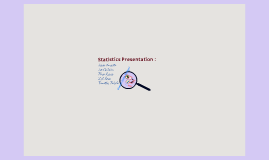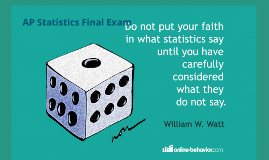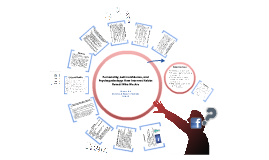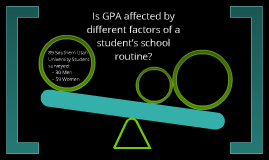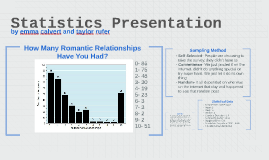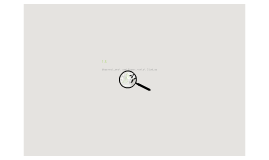Statistics Presentation
Transcript: Niemz, M., Griffiths, M., & Banyard, P. (2005). Prevalence of pathological internet use among university students and correlations with self-esteem, the General Health Questionnaire (GHQ), and disinhibition. CyberPsychology & Behavior, 8(6), 562-570. Rosen, L.D., Whaling, K., Carrier, L.M., & Cheever, N.A. (2013). Is Facebook creating “iDisorders”? The link between clinical symptoms of psychiatric disorders and technology use, attitudes and anxiety. Computers in Human Behavior. Seidman, G. (2013). Self-presentation and belonging on Facebook: How personality influences social media use and motivations. Personality and Individual Differences, 54, 402-407. A hierarchical multiple regression was performed and adjusted for demographics Determined which variables provided significant prediction in a simultaneous regression More time online and more FB impression management related to more clinical symptoms of major depression More FB friends, fewer symptoms of dysthymia Predictors of mania: more FB general use, more FB impression management, more FB friends Predictors of narcissism & histrionic PD: more FB friends, more impression management, and more general use General use and impression management also predicted more signs of ASPD & compulsive disorders Predictors of paranoia & schizoid PD: more FB general use and fewer FB friends Predictors of mania: More general FB use, more FB impression management, and more FB friends Limitations Methods Hypotheses & Methods References 18.3% of sample were pathological internet users, 51% had limited symptoms, and 30.5% had no symptoms Pathological internet users had lower self-esteem and were more socially disinhibited more online friends, friendlier, more liberated and open, more likely to share secrets Pathological internet use caused problems in academic, social, and interpersonal areas of life Males had a higher average number of pathological symptoms (M=2.6) than females (M=1.5) ANOVA showed this was statistically significant, p<.01 Positive correlation between hours spent online and PI symptoms, p<.01 No significant relationship between PIU and GHQ, p=.118 Not evidence based Not a broad demographic studied mostly college/young adult age No longitudinal data Mostly self-report--people lie! What do we do with this information? 184 undergraduate students participated in an online survey for extra credit Big Five assessed with Snacier's (1994) version of Goldberg's Big 5 markers Belongingness four scales two assessing belongingness behaviors two assessing motivations Self-presentation six scales two assessing self-presentational behaviors one assessing attention-seeking motivation three assessing the extent to which FB was used to express actual, hidden, and ideal self-aspects Teens, young adults, & adults (N=1143) completed an anonymous online questionnaire assessing internet and technology related behaviors, as well as symptoms of psychopathology Clinical symptoms of psychological disorders measured with the MCMI-III: Million Multiaxial Clinical Inventory Questions specific to FB usage: frequency of reading postings, posting status updates, posting photos, commenting on posts or statuses, commenting on photos, "checking in", changing or updating profile, browsing profiles, browsing photos, “liking” things, adding or requesting new friends, FB chatting, joining or creating events, playing games, joining or creating groups also asked about # of friends and how many they’d actually met Purpose: Past research has shown mixed results with regard to psychopathology and social networking use Some studies have shown positive correlations with SNS frequency of use and MDD, others have shown negative correlations or no relationship Studied if FB use, technology attitudes, and anxieties were predictive of personality and/or mood disorders Hypotheses: Adults who use more technology & media, particularly social media, will show increased clinical symptoms of psychiatric disorders Adults who show more negative attitudes toward technology will show increased clinical symptoms of psychiatric disorders Is Facebook Creating "iDisorders"? The link between clinical symptoms of psychiatric disorders and technology use, attitudes, and anxiety Prevalence of Pathological Internet Use among University Students and Correlations with Self-esteem, the GHQ, and Disinhibition. G. Seidman Methods Stats and Results Purpose: Internet Addiction Disorder (Pathological internet use) is a growing problem. Past studies have shown that PI users are more likely to be male, college-age, have lower self-esteem, and be less inhibited than the general population. Symptoms of IAD: withdrawal symptoms such as anxiety and depression when not online, tolerance (e.g. spending longer amounts of time in chat rooms), mood-altering, and preoccupation with one's online activities This study aimed to replicate past findings and see if they were applicable to the British college population. L.D. Rosen, K. Whaling, S. Rab,






